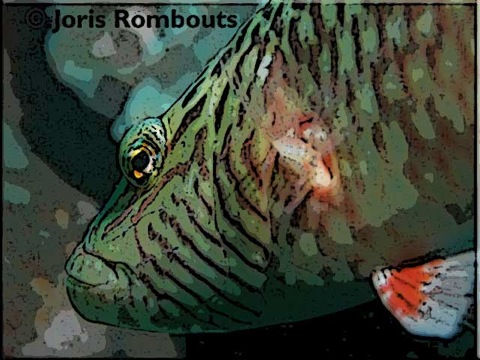- Check the sub-map for the specimen information files -
WRASSE - LABRIDAE
The Labridae family, together with the goby or Gobiidae family, is the biggest and most widespread fish species. Some of them are only five centimeters in length, while the biggest of all (Cheilinus undulatus) can grow to 2.3 meters long. All wrasse are born female and can change into primary males. The primary males mate in groups, while the colorful and territorial secondary males mate in pairs. Most wrasse species wait for the best time to mate. This depends on the position of the moon, ensuring that the pelagic eggs will be taken away by strong currents. The larvae come out after one day and develop further in open water. After one month they will look for their space on a reef somewhere. All wrasse are carnivores but have a variable diet. The Cirrilabrus- and Thalassoma specimen feed on plankton, juveniles of the Bodianus sp. and the Labrichthyni specimen work as cleaners and feed on ectoparasite crustaceans and sometimes on the body slime of their customer. Some of the small wrasse feed on tiny benthic animals which is why they need their double pupils to enable them to have close up eyesight. The mature Labrichthys- and Labropsis sp. feed on coral polyps and families like Anampses- and Stethojulis sp. filter sand to feed on small crustaceans, worms and small invertebrates. The biggest wrasse feed on invertebrates like crabs or sea urchins which they grind into pieces with their powerful teeth. All wrasse are very energetic swimmers and are only active during the day. Most small wrasse dig themselves into sand to sleep. Labridae only use their pectoral fins to swim and only when in danger will they also use their tailfin.
- Check the sub-map for the specimen information files -

